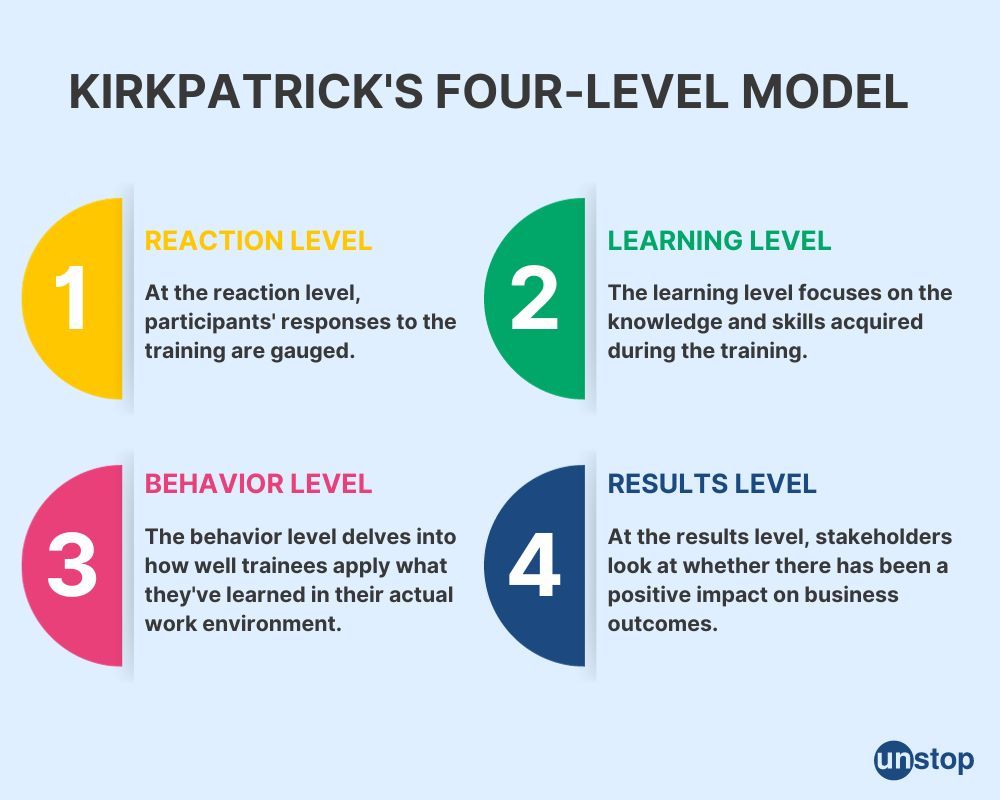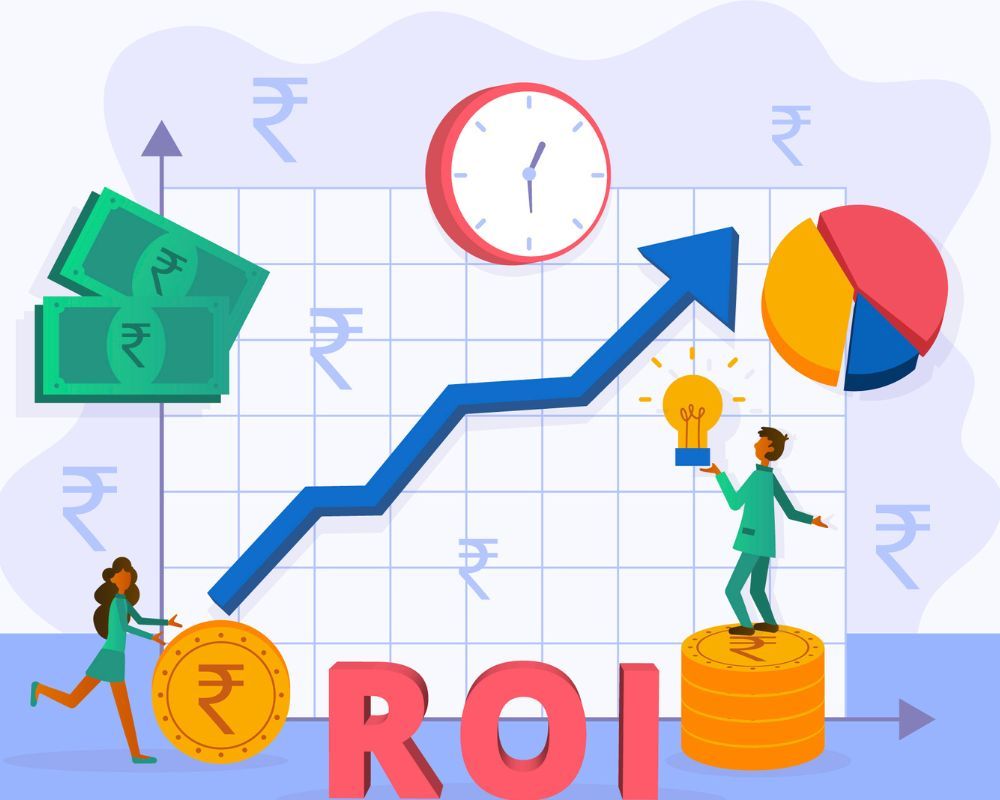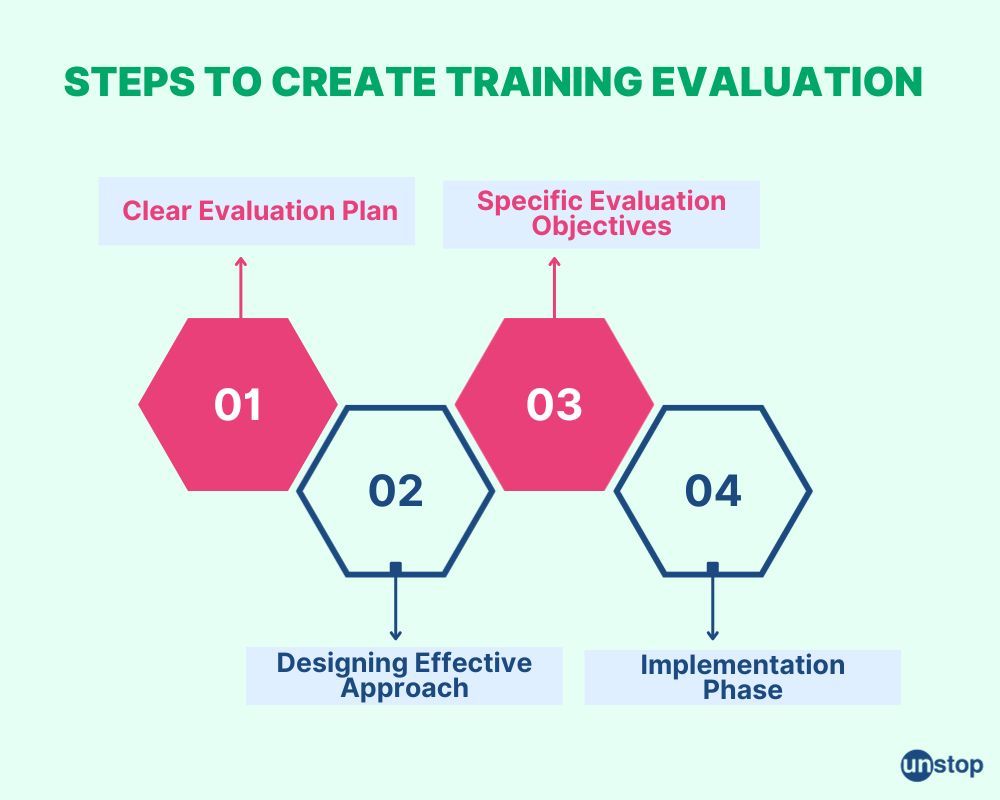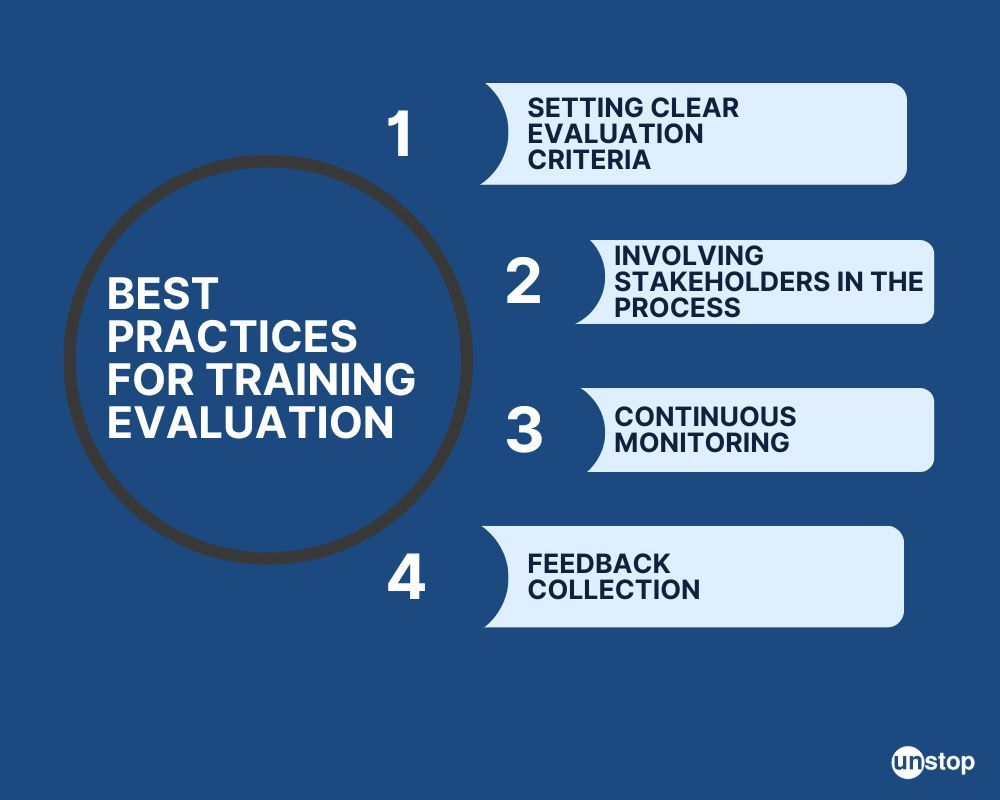- What is Human Resource Management (HRM)?
- Importance of HRM in an Organization
- What are the key Objectives of HRM?
- What are the main functions of HRM?
- Scope of HRM in an Organization
- Role Of HRM in an Organization
- Technology Integration & Future Trends in HRM
- Career Paths In Human Resource Management
- Conclusion
- Frequently Asked Questions (FAQs)
- Simulation Training: Understanding the Concept
- Evolution of Training Methodologies
- Benefits of Simulation Training
- Implementing Simulation Training in Organizations
- Future Simulation Training Trends
- Summing Up
- Frequently Asked Questions
- What do you mean by Performance Appraisal?
- Purpose & Objective of Performance Appraisal
- Types of Performance Appraisal
- Methods of Performance Appraisal: Benefits & Drawbacks
- Understanding the Working of Performance Appraisal
- Benefits of Performance Appraisal with Examples
- Criticisms & Limitations Of Performance Appraisal
- Conclusion
- Frequently Asked Questions (FAQ)
- Job Analysis: Definition & Importance
- Job Analysis: Key Components
- Identifying The Right Moment For Job Analysis
- Navigating Job Analysis Process
- Distinguishing Job Analysis & Evaluation
- Using The Findings Of Job Analysis
- Conclusion
- Frequently Asked Questions (FAQs)
- Deciphering Training & Development
- Difference Between Training, Development & Learning
- Significance Of Training & Development In HRM
- Benefits Of Training & Development For Organizations
- Types & Methods Of Employee Training
- Building Blocks Of Training Programs
- Trends & Innovation In Employee Training
- Strategic Integration With Talent Management
- Addressing Challenges In Training & Development
- Frequently Asked Questions (FAQs)
- Understanding Strategic Human Resource Management
- Scope Of Strategic Human Resource Management
- Creating A Strategic HR Plan In 7 Steps
- Different Approaches To Strategic Human Resource Management
- Importance Of Strategic Human Resource Management
- Characteristics Of Strategic Human Resource Management
- Frequently Asked Questions (FAQs)
- What is Selection Procedure in HRM?
- Stages Of Selection Procedure In HRM
- Making Informed Decisions With Job Offers
- Onboarding Strategies For New Hires
- Best Practices In Selection Procedure
- Conclusion
- Frequently Asked Questions (FAQs)
- Definition Of Human Resource Planning
- Understanding The Essence Of Human Resource Planning
- Key Objectives & Importance Of Human Resource Planning
- Strategic Alignment Of Human Resource Planning
- Core Steps Involved In Human Resource Planning Process
- Analyzing Labor Market Dynamics
- Tools & Techniques For Human Resource Planning
- Common Challenges & Solutions In Human Resource Planning
- Future Trends Influencing Human Resource Planning
- Measuring Success & Progress In Human Resource Planning
- Frequently Asked Questions (FAQs)
- Concept & Purpose Of Job Evaluation
- Overview Of Job Evaluation Methods
- Importance Of Implementing A Job Evaluation System
- Steps To Conduct A Thorough Job Evaluation
- Selecting Appropriate Method For Job Evaluation
- Establishing Job Evaluation Committee
- Advantages & Limitations Of Job Evaluation Techniques
- Maintaining & Updating Job Evaluation Process
- Frequently Asked Questions (FAQs)
- What is Training Needs Analysis?
- Purpose of Training Needs Analysis
- What are the Types of Training Needs Analysis?
- 7 Key Steps to Conduct Training Needs Analysis
- Methods of Data Collection for TNA
- What are the Benefits of Training Needs Analysis?
- Conclusion
- Frequently Asked Questions (FAQ)
- Types of Training Methods
- On-the-Job Training Methods (Learning by Doing)
- Off-the-Job Training Methods (Structured Learning)
- Microlearning & Mobile Learning
- Peer-to-Peer & Self-Directed Learning
- Choosing The Right Method
- Traditional Vs Modern Training Techniques
- Evaluating The Different Types Of Training Methods
- The Future of Training
- Conclusion
- Frequently Asked Questions (FAQs)
- What is Job Design in HRM?
- Methods of Job Design: Key Strategies
- The Impact of Taylorism on Job Design
- Hackman and Oldham Model or the Job Characteristics Model
- Socio-Technical Systems and Job Design
- The Job Design Process: Best Practices
- Things to Keep in Mind for an Effective Job Design Process
- Conclusion
- Frequently Asked Questions (FAQs)
- What is Training?
- What is Development?
- Core Differences Between Training and Development
- Similarities Between Training and Development
- Why This Difference Matters: Strategic Implications
- Importance of Training and Development
- Common Pitfalls of Confusing Training and Development
- Integrating Training and Development for Holistic Growth
- Frequently Asked Questions (FAQs)
- Key Challenges in Human Resource Management
- Addressing HRM Challenges Globally
- Legal and Regulatory Compliance in HRM
- Enhancing Productivity in HRM
- HRM Challenges in India
- Strategic Role of HR Leaders
- Technological Advancements in HRM
- Diversity and Inclusion in the Workplace
- Conclusion
- Frequently Asked Questions
- What do You Mean by Sources of Recruitment?
- Internal Sources of Recruitment
- Advantages & Disadvantages of Internal Sources of Recruitment
- External Sources of Recruitment
- Advantages & Disadvantages of External Sources of Recruitment
- Key Differences Between Internal & External Sources of Recruitment
- Innovative Recruitment Channels in the Digital Era
- Conclusion
- Frequently Asked Questions
- Want to Source Right & Optimize Your Recruitment Process?
- What is Human Capital?
- Human Capital Theory Explained
- Human Capital and Economic Growth
- Measuring Human Capital
- Human Capital Formation
- Human Capital Management Strategies
- Role of Education in Human Capital Formation
- Critiques of Human Capital Theories
- Future of Human Capital in Business
- Conclusion
- Frequently Asked Questions
- What is Wage?
- Types of Wages
- What is Minimum Wage?
- What is EPF Wage?
- What is the Differential Wage Rate?
- What is Real Wage?
- What is a Living Wage?
- Theories of Wages
- Factors That Affect Wages
- How Are Wages Calculated? (Formula to Calculate Wage)
- Key Differences Between Wages Vs. Salary
- Conclusion
- Frequently Asked Questions (FAQs)
- Definition Of Training Evaluation
- Understanding Training Evaluation Models
- Different Types Of Training Evaluation Methods
- Importance & Benefits Of Training Evaluation
- Formative Vs Summative Training Evaluation
- Creating An Effective Training Evaluation In Simple Steps
- Strategies For Employee Training Evaluation
- CIPP & Kaufman's Models In Training Evaluation
- Measuring & Analyzing Training Outcomes
- Best Practices For Conducting Training Evaluation
- Frequently Asked Questions (FAQs)
- What is Wage and Salary Administration in HRM?
- Importance of Wage and Salary Administration
- Objectives Of Wage & Salary Administration
- Principles Of Wage & Salary Administration
- Factors Influencing Wage & Salary Levels
- Frequently Asked Questions (FAQ)
- Meaning Of HR Professional
- Role Of An HR Professional
- Essential Skills Of Successful HR Professionals
- Effective Communication In HR Professionals
- Decision-Making & Problem-Solving In HR Professionals
- Frequently Asked Questions (FAQs)
- Definition & Evolution Of HRMS
- Understanding The Core Functionalities Of HRMS
- Key Features & Components Of HRMS
- Benefits & Importance Of Implementing HRMS
- Security Measures & Data Protection In HRMS
- Role Of Artificial Intelligence In HRMS
- Choosing The Right HRMS For Your Organization
- Frequently Asked Questions (FAQs)
- Definition Of Job Characteristics Model
- Hackman And Oldham Job Characteristics Model
- Five Core Job Characteristics Model Explained
- Psychological States & Work Outcomes in JCM
- Autonomy & Role In Job Satisfaction
- Task Significance
- Impact Of Feedback On Job Performance
- Factors Influencing The JCM's Effectiveness
- Practical Implications For SEO Content Writing
- Frequently Asked Questions (FAQs)
- Definition Of Executive Compensation
- Basics Of Executive Compensation
- Key Components Of Executive Compensation
- Purpose Of Compensation Packages
- Role Of Executive Compensation
- Types & Structures Of Executive Compensation Plan
- Short, Medium & Long-Term Compensation
- Trends & Regulations
- Best Practices For Executive Compensation
- Corporate Strategy & Governance
- Controversies & Criticisms
- Frequently Asked Questions (FAQs)
- Defining Employee Relations
- Importance Of Employee Relations Management
- Strategies For Effective Employee Relations
- Role Of An Employee Relations Specialist
- Resolving Workplace Disputes & Conflicts
- Addressing Wage Concerns & Policy Clarification
- Legal Compliance & Employee Relations Management
- Frequently Asked Questions (FAQs)
- What is International Human Resource Management?
- Objectives of International HRM
- Functions of International HRM
- Models of International HRM
- Strategies For Effective IHRM Implementation
- Key Differences Between IHRM and Domestic HRM
- Challenges in International HRM
- Frequently Asked Questions (FAQs)
- Importance Of Executive Development In HRM
- Methods Of Executive Development
- Objectives Of Executive Development
- Importance & Benefits Of Individualized Development Programs
- Frequently Asked Questions (FAQs)
- Defining Personnel Management & Objectives
- Key Functions Of Personnel Management
- Roles & Duties Of A Personnel Manager
- Personnel Management Vs. HRM
- Approaches & Policies In Personnel Management
- Manpower Planning, Recruitment & Selection Processes
- Training & Development Within Personnel Management
- Analysing Current Trends In Personnel Management
- Frequently Asked Questions (FAQs)
- What do you mean by Job Evaluation?
- What Are the Importance of Job Evaluation Methods?
- Best 7 Job Evaluation Methods in HRM
- Role Of Market Pricing In Job Evaluation
- Advantages & Disadvantages Of Job Evaluation Methods
- Career Progression, Legal Considerations & Compliance
- Best Practices For Job Evaluations
- Conclusion
- Frequently Asked Questions (FAQs)
- What is Personnel Management (PM)?
- What is Human Resource Management (HRM)?
- Similarities Between Personnel Management & HR Management
- Elaboration on Key Evolutionary Shifts
- Emerging Trends in Modern Human Resource Management
- Frequently Asked Questions (FAQs)
- Introduction to Kirkpatrick Model
- Origin & Evolution of the Kirkpatrick Model
- Importance of the Kirkpatrick Model
- Implementing the Kirkpatrick Model Training Evaluation
- Measuring Reaction: The First Level of Evaluation
- Assessing Learning: The Second Level Explained
- Evaluating Behavior Change: The Third Level of Impact
- Analyzing Results: The Fourth Level of Training Effectiveness
- Balancing Limitations in the Kirkpatrick Model
- Final Remarks
- Frequently Asked Questions (FAQs)
- Exploring The Concept Of Salary
- Key Differences Between Wages And Salary
- Types Of Wages & Their Impact on Earnings
- Varieties Of Salary Structures
- Advantages Of Earning Wages
- Benefits Of Receiving A Salary
- Legal Distinctions In Wage & Salary
- Overtime Compensation In Wage & Salary
- Frequently Asked Questions (FAQs)
- Fringe Benefits Meaning & Objectives
- Examples & Types Of Fringe Benefits
- Necessity Of Fringe Benefits By Law
- Tax Implications For Various Fringe Benefits
- Valuing & Calculating Fringe Benefits
- Role Of Cafeteria Plans In Fringe Benefits
- Impact Of Fringe Benefits On Employees
- Business Impact Of Fringe Benefits
- Considerations In Offering Fringe Benefits
- Conclusion
- Frequently Asked Questions (FAQs)
- What Is HR Compliance & Importance
- Key Elements Of An HR Compliance Checklist
- Managing HR Compliance In The Workplace
- Conducting An Effective HR Compliance Audit
- Overcoming Challenges In HR Compliance
- Automation For Streamlined HR Compliance
- Best Practices For Enforcing HR Compliance
- Long-term Data Governance In HR Compliance
- Frequently Asked Questions (FAQs)
- What is Recruitment Process In HRM?
- 5 Essential Stages of Recruitment & Selection Process
- Identifying Vacancies & Crafting Effective Job Descriptions
- Job Portals, Social Media & Technology in Recruitment
- Internal Vs External Sources of Recruitment
- Strategies for effective Recruitment in HRM
- Psychometric Tests used in Recruitment
- Conclusion
- Frequently Asked Questions (FAQs)
Training Evaluation: Models, Methods & Best Practices Explained

Training evaluation helps organizations see how well their training works, find ways to make it better, and decide what to do for future training. Assessing training is really important for any learning effort.
In this article, we will look at the main advantages of doing comprehensive training assessments, explain the most effective ways to create assessment structures, and offer useful advice for putting into action successful assessment methods.
Definition Of Training Evaluation
Training evaluation involves assessing how well a training program works and the effects it has. It involves collecting and analyzing data to ascertain whether the training has achieved its objectives and to identify areas for improvement.
This can be done through various methods such as surveys, interviews, observation, and performance metrics.
The ultimate aim of training evaluation is to make sure that the training program meets the requirements of both the learners and the organization and to help in making well-informed decisions about upcoming training efforts.
Understanding Training Evaluation Models
Training evaluation models come in various types, each serving a specific purpose. Some models focus on measuring reaction and satisfaction, while others assess learning and behavior change.
Kirkpatrick's Four-Level Model
Kirkpatrick's model of training evaluation assesses training programs across four levels:

At the reaction level, participants' responses to the training are gauged. This includes their satisfaction with the program and whether they found it valuable.
The learning level focuses on the knowledge and skills acquired during the training. It examines how much information participants have absorbed and retained.
The behavior level delves into how well trainees apply what they've learned in their actual work environment. It's about observing if there's a transfer of new knowledge or skills from the training room to real-life situations within an organization.
Finally, at the results level, stakeholders look at whether there has been a positive impact on business outcomes as a result of employees' participation in the training program.
This model provides a structured approach to assessing the value of training and development initiatives, helping organizations make effective decisions about their investment in employee learning and growth.
Phillips ROI Methodology
The Phillips ROI Methodology is a model used to measure the return on investment (ROI) of a particular business initiative or project.

Jack Phillips developed this widely used evaluation method in business and human resource planning to assess the effectiveness and impact of different programs and activities.
The methodology involves calculating the monetary benefits of an initiative and comparing it to the costs incurred, providing a clear picture of the value generated.
This model helps organizations make data-driven decisions and allocate resources more effectively based on the expected ROI.
These evaluation models give a structured way to assess various parts of training programs.
When organizations use these evaluation models well, they can understand the good and not-so-good points of their training efforts.
Different Types Of Training Evaluation Methods
Let us study some of the important types of training evaluation methods:
Quantitative Methods
Quantitative methods use numerical data to measure the effectiveness of a training program. This can include pre- and post-training tests, surveys, or even performance metrics. These methods provide concrete, measurable results that are easy to analyze.
When using pre- and post-training tests, trainers can assess the knowledge gained or skill improvement of the participants.
For instance, before a sales training program, participants could take a test on product knowledge. After the training, they would retake the same test to measure their improvement.
Surveys are another quantitative method used for gathering feedback from trainees about various aspects of the training program, such as content relevance and instructor effectiveness. The collected responses can be converted into numerical ratings for analysis.
Qualitative Methods
On the other hand, qualitative methods focus on gathering descriptive data through observations and open-ended questions. These methods aim to capture trainees' experiences, perceptions, and feelings regarding their learning journey.
One common qualitative method is conducting interviews with participants after completing a training program. Trainers can ask open-ended questions about what they found most valuable in the training or areas where they feel additional support is needed.
Another example of a qualitative method is direct observation during simulated tasks or role-playing exercises within the training environment.
Trainers can note how well participants apply newly learned skills in real-life scenarios.
Mixed-Methods Approach
A mixed-methods approach involves using both numbers and descriptions to evaluate a training program thoroughly and understand its effects.
By utilizing this approach, trainers can obtain rich data that includes both statistical measurements and detailed narratives from trainees.
Importance & Benefits Of Training Evaluation
Let us study some of the importance and benefits of training evaluation:
Measuring Impact
Training evaluation is essential for measuring the impact of training on employees. It allows organizations to determine whether the training programs are effective in enhancing the skills and knowledge of their workforce.
For example, by assessing how well employees have absorbed new information or skills, companies can gauge the overall success of their training initiatives.
Evaluation also provides insights into whether the learning objectives set at the beginning of a training program have been met.
This ensures that resources invested in employee development are yielding tangible results, contributing to organizational growth.
Identifying Areas For Improvement
Another key benefit of training evaluation is its role in identifying areas for improvement within the training process.
By gathering feedback from participants and observing their performance post-training, organizations can pinpoint specific areas that need enhancement.
This could range from modifying course content or delivery methods to addressing any logistical challenges faced during training sessions.
For instance, if an organization conducts a customer service training program and finds through evaluation that employees still struggle with conflict resolution techniques, it can tailor future training to focus more extensively on this skill area.
Better Resource Utilization
Effective evaluation leads to better utilization of resources and improved employee performance. By understanding which aspects of a particular training were most impactful, organizations can allocate resources more efficiently towards those elements in future programs.
This optimizes budget allocation while maximizing learning outcomes.
Employee Performance
Moreover, when employees receive relevant and effective training based on thorough evaluations, they become better equipped to perform their roles proficiently.
As a result, this contributes positively to overall productivity levels within an organization while also boosting employee morale due to increased confidence in performing tasks effectively.
Formative Vs Summative Training Evaluation
Formative evaluation, also known as ongoing assessment, concentrates on continuous improvement throughout the training process.
The purpose is to find the good and bad parts of the training and make changes quickly.
For instance, trainers may use questionnaires or quizzes during a workshop to gather feedback on specific topics or teaching methods.
Conversely, summative evaluation aims to evaluate the overall success and influence of the complete training initiative.
This type of assessment occurs at the end of the training period to determine if participants have achieved their learning objectives.
Trainers often employ post-training surveys or tests to measure knowledge retention and skill application after completing a course.
Formative evaluations help to make improvements during training, while summative evaluations show how well participants have learned new skills by comparing their performance to set standards.
Creating An Effective Training Evaluation In Simple Steps
Let us look at some of the simple steps required to create an effective training evaluation:

A Clear Evaluation Plan
Creating a training evaluation plan is essential for assessing the success of training programs. It helps in setting clear objectives, determining data collection methods, and establishing analysis techniques.
By having a clear plan in place, companies can make sure that their training programs match up with their objectives.
Developing Specific Evaluation Objectives
Developing specific evaluation objectives is imperative as it provides clarity on what needs to be measured and assessed during the training process.
For example, if one of the objectives is to assess knowledge retention after training sessions, using pre- and post-training assessments or quizzes can provide valuable insights into participants' learning outcomes.
The chosen data collection methods should align with the evaluation objectives.
Designing An Effective Approach
An effective approach involves designing a systematic framework for evaluating training programs. This includes outlining how data will be collected and analyzed at different stages of the program.
By incorporating both formative and summative evaluation techniques into the plan, organizations can gather continuous feedback while also measuring overall program effectiveness.
Implementation Phase
The implementation phase involves putting the designed approach into action by executing data collection activities according to the established timeline and guidelines.
Strategies For Employee Training Evaluation
Let us study some of the important strategies used in employee training evaluation programs:
Surveys, Interviews & Observations
When evaluating employee training, a range of strategies can be utilized, including surveys, interviews, and observations.
Surveys involve collecting feedback from employees through questionnaires to gauge their understanding and satisfaction with the training program.
Interviews provide an opportunity for in-depth discussions with employees to gather insights into their learning experiences and challenges faced during the training.
Observations involve directly assessing employees' application of newly acquired skills in real work scenarios.
Combining these methods offers a comprehensive view of employee performance post-training. For instance, while surveys may capture overall satisfaction levels, interviews can delve deeper into specific areas where improvement is needed.
Observations then validate whether the knowledge gained during training is effectively applied in practical settings.
Tailored Approach
Tailoring evaluation strategies to meet specific organizational needs is crucial for ensuring accurate assessments of employee training effectiveness.
By customizing evaluation methods based on the nature of the organization's operations, workforce demographics, and learning culture, companies can obtain more relevant and actionable insights.
For example, a technology company might find that hands-on demonstrations are particularly effective in evaluating technical skill acquisition among its employees.
On the other hand, a customer service-oriented company might prioritize role-playing exercises as part of its evaluation strategy to assess how well employees apply new communication techniques learned during training.
Customization also involves aligning evaluation metrics with key performance indicators (KPIs) relevant to each department or team within an organization.
This ensures that evaluations yield data that directly correlates with desired outcomes unique to different segments of the workforce.
CIPP & Kaufman's Models In Training Evaluation
Let us study in detail the CIPP and Kaufmam's models in training evaluation:
CIPP Model
The CIPP model is a comprehensive framework used in training evaluation programs. It stands for Context, Input, Process, and Product. The CIPP model provides a structured approach that ensures all critical aspects of a training program are thoroughly evaluated.
This model allows organizations to assess the various elements of their training initiatives systematically. First, they examine the context in which the training takes place - considering factors like organizational culture and resources available.
Then, they analyze the input, such as curriculum design and materials used for training. Next comes an evaluation of the process itself - how well was the training implemented?
Finally, there's an assessment of the product, which involves measuring outcomes and determining if goals were achieved.
For instance, when using this model to assess a customer service training program, organizations can first consider whether it aligns with their company culture (context).
Then, they can review the quality of materials provided to employees during the program (input), followed by analyzing how well trainers delivered content (process), and finally, examining if there was an improvement in customer satisfaction or issue resolution after completing the program (product).
Kaufman's Model
Roger Kaufman's model emphasizes aligning employee development efforts with organizational objectives and performance improvements.
This approach focuses on understanding what specific changes need to occur within an organization to enhance overall performance through effective training programs.
This means that before implementing any new employee development initiative or evaluating existing ones, organizations using Kaufman's model in training evaluation must have clarity regarding their strategic goals and how these goals tie into individual employee performance expectations.
Measuring & Analyzing Training Outcomes
Let us look at the importance of measuring and analyzing training outcomes for organizations:
Assessing Changes
After training, it's crucial to assess changes in knowledge, skills, and behavior among the participants. This involves evaluating whether they have acquired new competencies or improved existing ones.
Measuring these changes helps organizations understand the impact of their training programs on individual performance.
It also allows them to identify any gaps between the current skill set and the desired level of competency.
By doing so, companies can tailor future training initiatives to address specific areas where improvement is needed.
For example, after a customer service training program, the assessment may include measuring how well employees handle customer inquiries or complaints.
Analyzing data is really important because it helps us understand how well the training has worked in filling these skill gaps.
Understanding Impact
Measuring the results of training is really important to see if it actually works. Companies need to be able to figure out how much better their employees are at their jobs because of the training they receive.
By analyzing data related to performance metrics such as sales figures or error rates before and after a particular training, businesses can gain valuable insights into its impact.
Moreover, understanding such impacts requires considering not only immediate results but also long-term effects on employee behavior and organizational success.
This means looking beyond just immediate post-training improvements but also observing sustained changes over time that contribute to achieving intermediate objectives leading up to ultimate objectives.
Best Practices For Conducting Training Evaluation
Let us study some of the best practices used for conducting training evaluation:

Setting Clear Evaluation Criteria
When conducting training evaluation, it's crucial to establish clear evaluation criteria. This involves defining the specific aspects of the training program that will be assessed.
Setting clear evaluation criteria helps in aligning the evaluation questions with the overall objectives of the training program. This ensures that meaningful data is collected to gauge the effectiveness of the training initiatives.
For example, if an organization has implemented a new customer service training program, the evaluation criteria might include measuring improvements in customer satisfaction ratings or assessing the development of key communication skills among employees.
Involving Stakeholders In The Process
Involving stakeholders such as trainers, trainees, and organizational leaders in the training evaluation process is essential for gaining diverse perspectives on its effectiveness.
When stakeholders participate in providing feedback through interviews or focus groups, they contribute valuable insights into how well the training materials and methods align with their needs and expectations.
Moreover, engaging stakeholders fosters a sense of ownership and commitment to improvement within an organization.
It also allows for a more comprehensive understanding of how different individuals perceive various aspects of a training program.
Continuous Monitoring & Feedback Collection
Continuous monitoring throughout a training program allows organizations to gather ongoing feedback about its impact on participants' performance.
The regular collection of feedback enables organizations to make real-time adjustments to address any identified issues promptly.
For instance, using surveys at multiple points during a long-term leadership development program can provide insights into participants' evolving needs and challenges as they progress through different phases of their learning journey.
Furthermore, continuous monitoring supports agility by allowing organizations to adapt swiftly based on emerging trends or changing requirements within their internal or external environments.
Conclusion
In summary, this article has given a full understanding of training evaluation, stressing its importance in judging how well training programs work. By looking at different models, methods, and best ways to evaluate training, organizations can have what they need to measure and study training results effectively.
Time For A Short Quiz
Frequently Asked Questions (FAQs)
1. What are the different types of training evaluation methods?
There are various types of training evaluation methods, including Kirkpatrick's Four-Level Model, formative and summative evaluations, CIPP, and Kaufman's models.
Each method offers unique approaches to assessing the effectiveness and impact of training programs.
2. Why is it important to evaluate training programs?
Training evaluation programs are crucial for assessing their effectiveness in meeting learning objectives, improving performance, and ensuring a return on investment.
Assessing training programs helps companies find out what they're doing well and where they need to improve. This information guides them in making smart choices for getting better.
3. How can an organization create an effective evaluation plan for employee training?
To make sure employee training evaluations are effective, companies need to set clear goals, choose the right assessment techniques, collect important information as they go along, thoroughly analyze the results, and then use what they learn to plan future training strategies.
4. What are some best practices for conducting comprehensive training evaluations?
Best practices for conducting comprehensive training evaluations include aligning assessments with organizational goals, using a mix of qualitative and quantitative measures, involving stakeholders in the training evaluation process, and collecting data at multiple points in time to track progress effectively.
5. How can organizations measure and analyze the outcomes of their employee training programs?
Organizations can measure and analyze the outcomes of their employee training programs by utilizing key performance indicators (KPIs), conducting pre-and post-training assessments, and analyzing changes in behavior or performance metrics after completing the program.
This allows them to gauge the impact on individual employees as well as overall organizational performance.
Suggested reads:
- Job Analysis: Definition, Significance & Process Explained
- Transforming Hiring Landscape - Harnessing AI And ML For Talent Acquisition
- Performance Appraisal | Comprehensive Guide To Methods & Benefits
- Succession Planning: A Comprehensive Guide for HR Professionals
- Human Resource Executive (HR) - As A Career Option
Instinctively, I fall for nature, music, humor, reading, writing, listening, traveling, observing, learning, unlearning, friendship, exercise, etc., all these from the cradle to the grave- that's ME! It's my irrefutable belief in the uniqueness of all. I'll vehemently defend your right to be your best while I expect the same from you!
Login to continue reading
And access exclusive content, personalized recommendations, and career-boosting opportunities.
Subscribe
to our newsletter
















Comments
Add comment